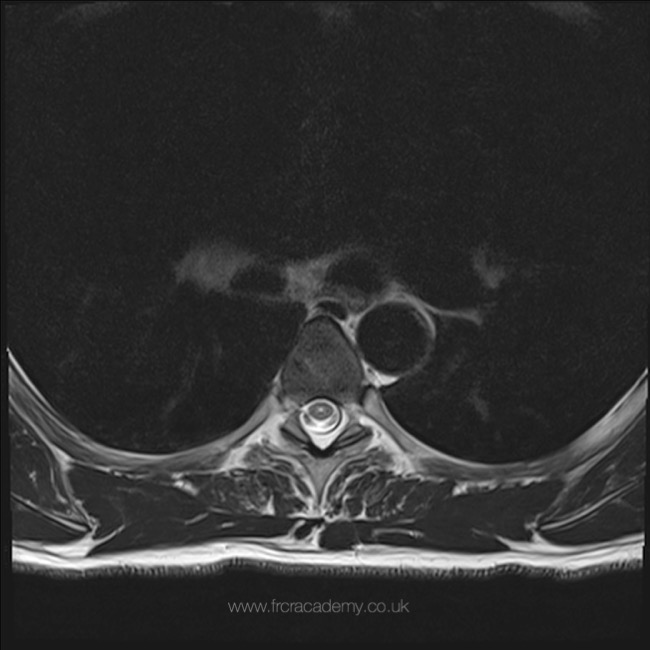Case 3: 50yr old female with arm weakness

|

|

|

|
Observations & Interpretations
MRI: No space occupying lesions or evidence of infarct. Low lying cerebellar tonsils, which extend below foramen magnum. There is an associated syrinx which extends down to the bottom of the imaged cord. No Hydrocephalus. The medulla and 4th ventricle do not extend below the foramen magnum. There is no associated encephalocoele. The cerebellum is not hypoplastic.Principal Diagnosis
Chiari I MalformationDifferential Diagnosis
Post-traumatic syrinx Cord tumour causing syrinxManagement
Referral to neurosurgeons for consideration of decompression of the posterior fossa| Marking Scheme | ||
|---|---|---|
| 3 | Nothing | Nothing Written |
| 4 | Fail | Significant Observations Missed. No Mention of Correct Diagnosis |
| 5 | Borderline | Some Observations Missed. Only 1 of the main diagnoses suggested |
| 6 | Pass | Most observations made. The main diagnoses are made (at least in differential) |
| 7 | Good Pass | Observations made. Principal Diagnoses are all correct, and there is good reasoning. |
| 8 | Perfect Answer | Clear, Concise & Confident. Good Reasoning, and no unrealistic differentials |
You should mark yourself realistically. Some cases will be hard, and just making the relevant observations and sensible observations will give you a pass. Some cases will seem easy, and it is these cases you need to be scoring 7 or 8. In the exam if you write something very incorrect, or if you put down too many obscure differentials, then half marks can be deducted from your score. Make sure you include relevant negatives. If you think there is only 1 differential then be confident, and don't put down unlikely diagnoses. Make sure your handwriting is clear, and use bullet-points to make it more readable. Timing is crucial, and don't spend too long on a single case. As you will note from the mark scheme, if you put nothing down you get a 3. So simply writing a single observation gives you a point
.



